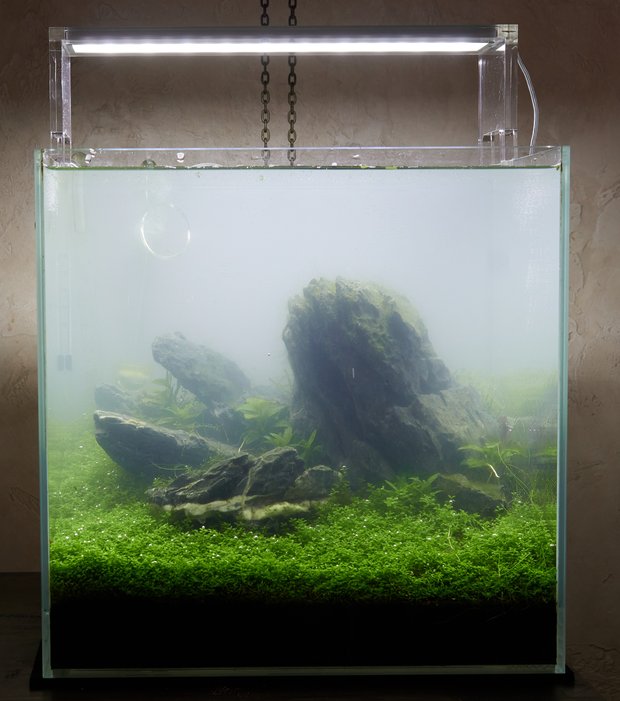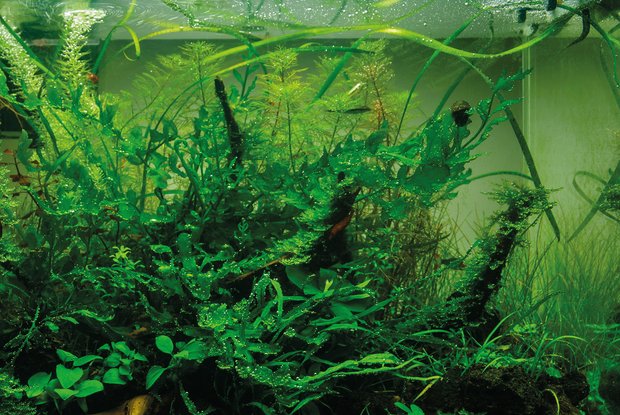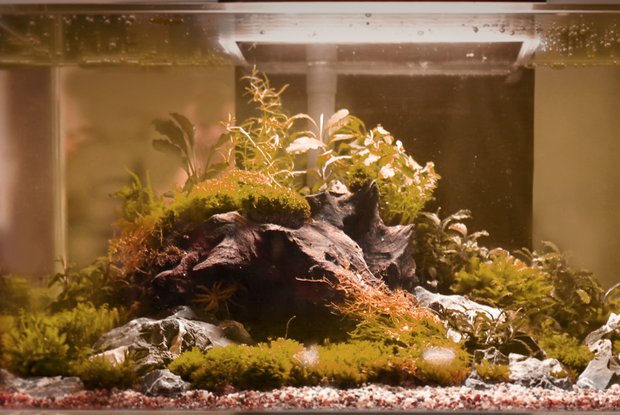
Whitish/milky turbidity
The most common cause of cloudy aquarium water is floating particles, which can be caused by churning up the substrate or lack of water changes. You should also check if your pump is working properly and if your filter material is dirty.
Another reason for white/milky turbidity in the aquarium can be a bacterial bloom. This occurs mainly in aquariums that have not been fully acclimated yet, as the biological equilibrium has often not settled in this phase and is therefore particularly susceptible to algae and bacteria. However, this usually disappears again after a short time. Here are our instructions for a quick & safe aquarium start:
However, you may experience a bacterial bloom even after cleaning your filter, because you remove many important bacteria that provide the biological equilibrium in the tank by cleaning the filter. To restore this equilibrium immediately, it is best to use the MICROBE-LIFT Gel Filter. The Gel Filter is an innovative bacterial product, which ensures that filters and filter media are immediately biologically active when they are used for the first time or after cleaning. This increases their biological filter performance significantly.
An oversupply of nutrients can also be a cause of bacterial bloom. For example, it may originate from excessive feeding, dead plant debris or an overdose of fertiliser. In this case, reduce the amount of food and fertiliser for a short time and clear the aquarium of organic waste. An effective solution would be to use a UVC clarifier, which kills microorganisms flowing through it with UV light. Our MICROBE-LIFT Special Blend will also help you reduce an overabundance of nutrients and dead plant debris, etc.

Greenish turbidity
If the water in your aquarium appears green, it indicates an algal bloom or floating algae. As with bacterial blooms, the cause is often an imbalance of nutrients. Therefore, adjust the feed and fertiliser dosage and remove any organic residues from the aquarium. You should also replace a massive amount of the water. Controlled lighting and the use of a UVC clarifier can also help combat bacterial blooms.
Afterwards, make sure that there is an instant biological balance in your aquarium. Therefore, we recommend the use of MICROBE-LIFT Special Blend as well as our fertiliser series.

Yellowish or brownish colour
If your aquarium water has a yellowish or brownish tinge, this may be a sign of released humic acid. This is often leached out by newly added roots, alder cones, leaves or soil substrate, turning the water brown. The discolouration caused by roots is not dangerous for your aquarium inhabitants. Remedies include several water changes and the use of filter media, such as MICROBE-LIFT Carbopure, to remove the humic acid from the aquarium. We also strongly recommend MICROBE-LIFT Special Blend.To prevent discolouration in advance, you can water and boil roots before placing them in the aquarium.

